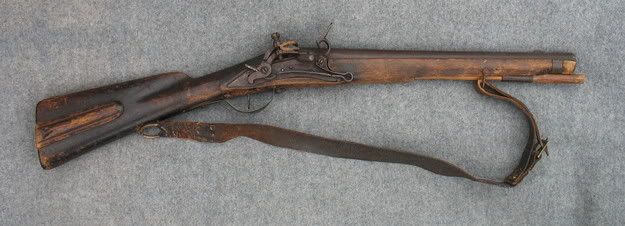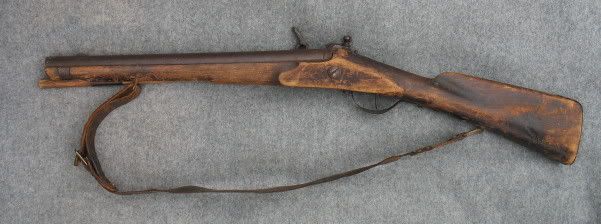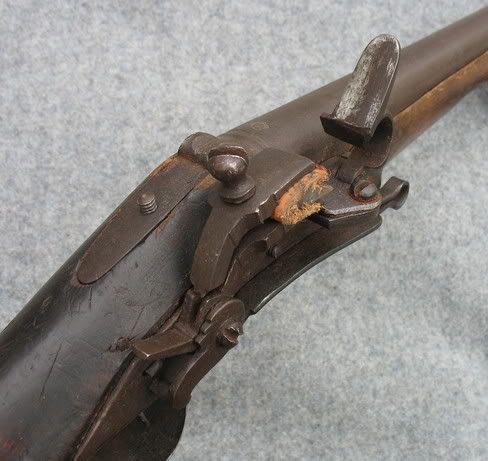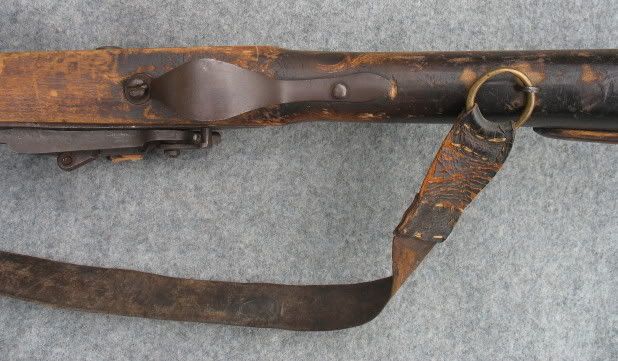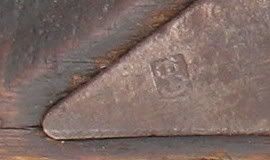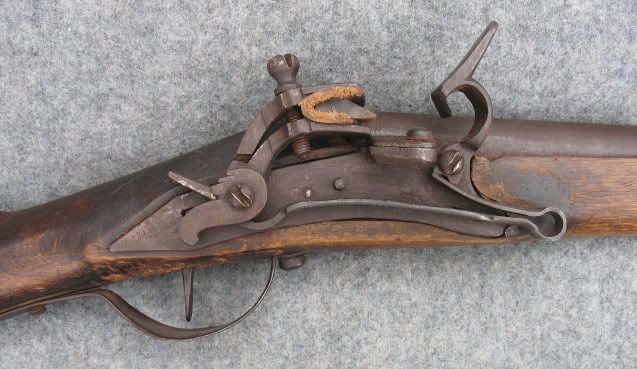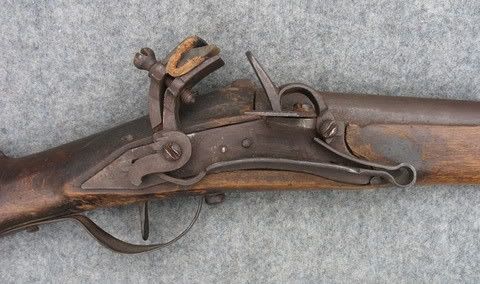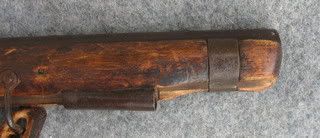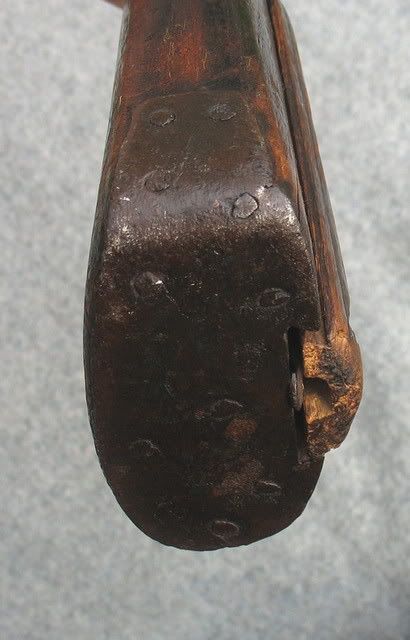This really is an interesting musket - and extremely difficult to date. It seems to have a lot in common with what we in Norway call samegevær (lapplanders gun). These were produced in snaphaunce from the early 1600's to the mid 1800's. The ones made after the 1840-50' were very simular to the snaphaunce models, but were in percussion - slagsnaphane I believe they were called in Sweden, where most of them were made. These had a way smaller cailbre than the musket in this thread and were rifled.
The rifle on the picture is a typical samegevær from the late 1800's. It has a rifled bore of only 6,5 mm. It does not have a shoulder stock, but a really old fashioned and completely outdated cheek stock (in most of Europe these went out of production by the early 1700's). It has the typical design where the ramrod lies in the stock so it will not be stuck due to ice, etc.
Then back to the musket in question. The design and carving of the stock (except the lid for the "leddik") seems fairly "modern" in design and I would guess some time around the mid 1800's. The mentioned lid has a design that brings it way back to the first half of the 1700's. The musket seems to have a butt plate. Guns like this hardly ever had these before way out in the late 1700's.
I have not seen or tried to check any markings. The barrel does not have the typical ring 1/3 down that most Northern muskets had until the 1750's, so I would guess this to be less than 250 yo. I am pretty sure this is a cut down military barrel from the early second half of the 1700's, perhaps from a M1762, thereby "confirming" that this version of the gun was assembled in the early 1800's. The lock might be from any time up to about 1850 and seems to be in an excellent condition compared to the rest of the gun. The amount of use it should have seen, had it been the oldest part of the gun, should have been very noticable.
Guns were expencive and people were poor. Many of these guns were used over generations and they saw a lot of wear and tear. New stocks were fitted as the old ones broke. Another and seemingly better barrel was taken into use etc. There are very few of these old civilian long guns left in original condition. This might therefor be a musket assembled for second or third time, that originally started out as a rifle with a cheek stock as the one on the picture.
Trond
